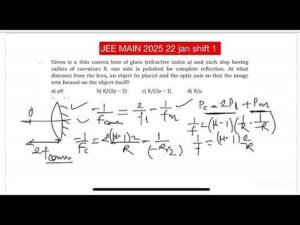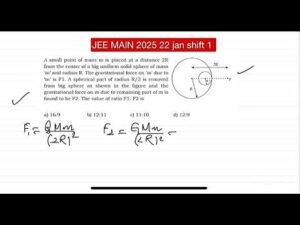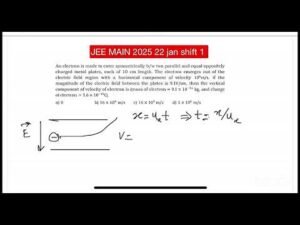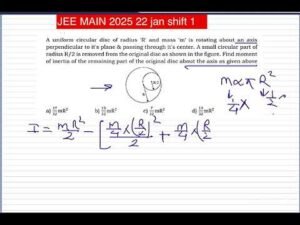Description
#jeeadvanced,#quickrevision
Frequently Asked Questions
How to prepare for IIT-JEE Physics?
To prepare for IIT-JEE Physics, focus on understanding concepts rather than memorizing formulas. Practice solving a variety of problems, especially previous years’ questions. Create a study schedule that covers all topics, with extra time for challenging areas like Mechanics and Electromagnetism. Regular revision and mock tests are essential for success.
How to effectively solve physics numerical problems?
To solve physics numerical problems effectively, first understand the concept thoroughly. Then follow these steps: 1) Read the problem carefully and identify the given quantities and what needs to be found. 2) Draw a diagram if applicable. 3) Write down the relevant formulas. 4) Substitute the values with proper units. 5) Solve step by step. 6) Verify your answer by checking units and whether the result makes physical sense.
What are the best books for physics preparation?
For conceptual understanding, NCERT textbooks are essential. For IIT-JEE/NEET preparation, recommended books include H.C. Verma’s “Concepts of Physics,” D.C. Pandey’s “Understanding Physics” series, I.E. Irodov’s “Problems in General Physics” for advanced problems, and Resnick & Halliday for comprehensive theory. For quick revision, use concise guides like “Physics Formula Book” by DC Pandey.
To prepare for IIT-JEE Physics, focus on understanding concepts rather than memorizing formulas. Practice solving a variety of problems, especially previous years’ questions. Create a study schedule that covers all topics, with extra time for challenging areas like Mechanics and Electromagnetism. Regular revision and mock tests are essential for success.
To solve physics numerical problems effectively, first understand the concept thoroughly. Then follow these steps: 1) Read the problem carefully and identify the given quantities and what needs to be found. 2) Draw a diagram if applicable. 3) Write down the relevant formulas. 4) Substitute the values with proper units. 5) Solve step by step. 6) Verify your answer by checking units and whether the result makes physical sense.
For conceptual understanding, NCERT textbooks are essential. For IIT-JEE/NEET preparation, recommended books include H.C. Verma’s “Concepts of Physics,” D.C. Pandey’s “Understanding Physics” series, I.E. Irodov’s “Problems in General Physics” for advanced problems, and Resnick & Halliday for comprehensive theory. For quick revision, use concise guides like “Physics Formula Book” by DC Pandey.”
Welcome to PhysicsMonk.com – India’s Largest Platform for Instant Doubt Solutions
PhysicsMonk.com is the ultimate destination for instant video solutions to your doubts in Physics—from Class 11th to JEE Advanced and NEET level. With a growing library of over 15 lakh+ expert-created video solutions, we make learning fast, easy, and effective.
Just click a photo of your doubt using the PhysicsMonk in the end and submit in google, and get an instant, step-by-step video explanation. It’s the simplest way to solve doubts in seconds—whether you’re studying for CBSE board exams, IIT-JEE, NEET, or any other competitive exam.
Why PhysicsMonk.com?
• 10,00,000+ Free Video Solutions
• Covers NCERT, JEE Main, JEE Advanced, NEET, and State Boards
• Unlimited Doubt Solving with Just One Click
• Instant, Concept-Based Answers by Experts
• 24×7 Learning Support via the AskDoubtnut App
Trusted by millions of students across India, PhysicsMonk.com helps you turn doubts into confidence. No more waiting—ask, learn, and grow with PhysicsMonk.com!
#DoubthotoDoubtnutkaro
- NEET 2025:To an ac power supply of 220 V at 50 Hz, a resistor of 20 Ω, a capacitor of reactance 25
- NEET 2025: (By 2 methods)In some appropriate units, time (t) and position (x) relation of a moving p
- NEET 2025: AB is a part of an electrical circuit (see figure). The potential difference “VA – VB”, a
- NEET 2025:A ball of mass 0.5 kg is dropped from a height of 40 m. The ball hits the ground and rises
- NEET 2025:The current passing through the battery in the given circuit, is:







